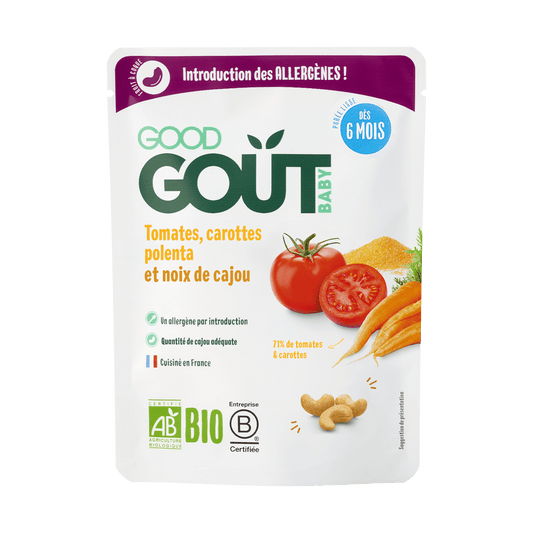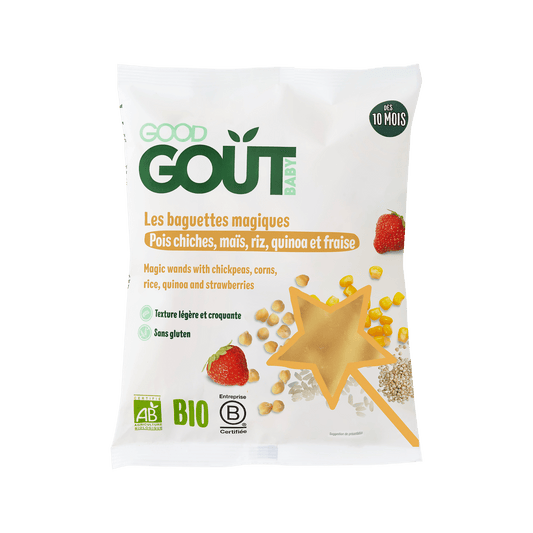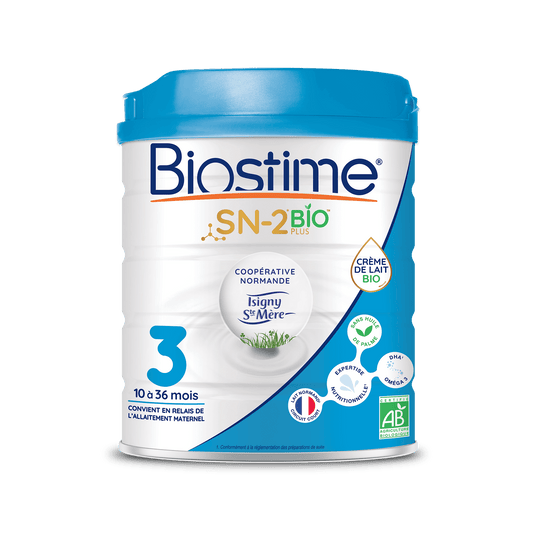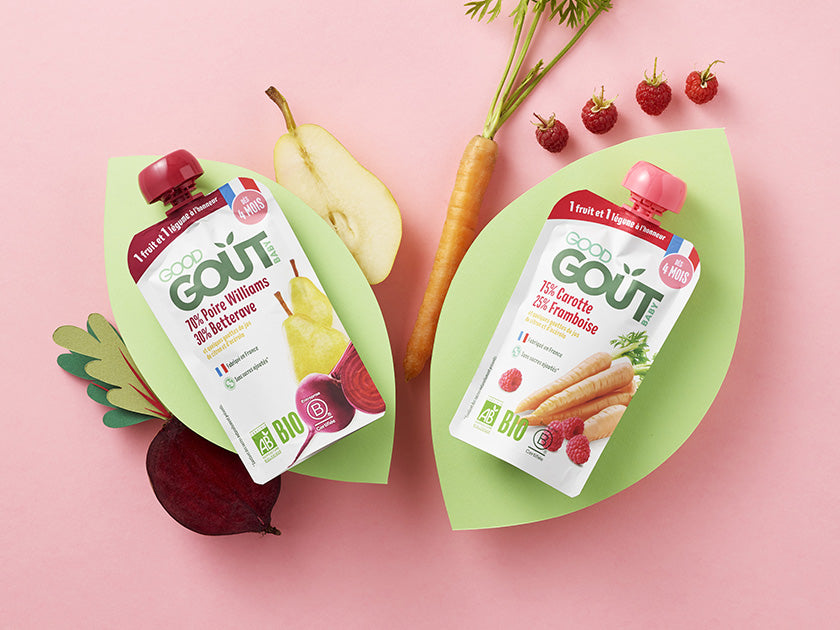From the age of 1, your child has already diversified his diet. From then on, it is recommended that you opt for growth milk[1], in order to supplement his nutritional intake. Zoom in on its benefits!
What is baby growth milk?
Between 4 and 6 months, your baby adopts a diversified diet. Their body is then in full development and their nutritional needs become greater. Hence the importance of growing-up milk for your baby! A true ally for your little one, it helps supplement their nutritional intake* and help them grow. Indeed, despite the diversification of their diet, your baby does not ingest sufficient quantities to have a completely balanced diet[2].
What does organic growth milk contain?
Organic growth milk contains a wide range of nutrients*:
- Calcium and vitamin D: key allies to boost your little angel's skeleton.
- Proteins.
- Carbohydrates.
- DHA** for normal vision development in infants up to 12 months.
- Iron needed for children's cognitive development.
Did you know?
One in two children does not consume enough iron[3]. 500 ml of growing-up milk covers 80% of their daily iron needs, thus helping to avoid deficiencies. We say yes!
Growing-up milk versus cow's milk
When introducing solid foods (from the age of 1), some parents choose to give their child cow's milk. While it may be recommended after 36 months when your baby has acquired sufficient nutritional foundations, it's better to opt for follow-up milk until then. Here's what follow-up milk offers compared to cow's milk:
- A limited protein level, 2 times less than cow's milk[4], and that's rather good news! At this time, it is recommended to limit the amount of protein for your baby, in order to avoid overloading his kidneys[5].
- An iron intake approximately 30 times higher[6] than that of cow's milk (given the low consumption of animal proteins, the main sources of iron, your little one needs to supplement).
- A lower salt level, which avoids the risk of blood pressure and reduces the appetite for salty tastes[7]: we adopt the right habits from an early age.
- A zinc level twice that of cow's milk.
What are the regulations for growth milk?
Since 1976, infant formulas have been subject to strict European regulations. All nutrients present in infant milk ( 1st stage) and follow-on milk ( 2nd stage) are regulated, with, for the most part, a minimum and maximum quantity not to be exceeded. Good to know, right?
Which bottle to choose? for Biostime infant milk ?
At Dodie , we are committed to offering practical and innovative products to make your daily life as parents easier. Discover our range of Dodie EXTRA anti-colic bottles , recommended by midwives[8] and designed for babies and parents. Extra-practical , EXTRA anti-colic bottles are ready in a single step , thanks to a unique teat , in just one piece, Equipped with a patented double anti-colic valve . Inspired by the mother's breast , the EXTRA teat allows for extra-natural breastfeeding .

And for you, how is it going?
Are you interested in switching from follow-on milk to growing-up milk for your baby? Are you wondering about nutritional supplements for your baby? Would you like more information about growing-up milks? Share your stories and ask us your questions at contact@biostime.fr or by DM on Instagram@biostime.fr . See you soon!
*In accordance with current regulations
**Docosahexaenoic acid – in accordance with current regulations












